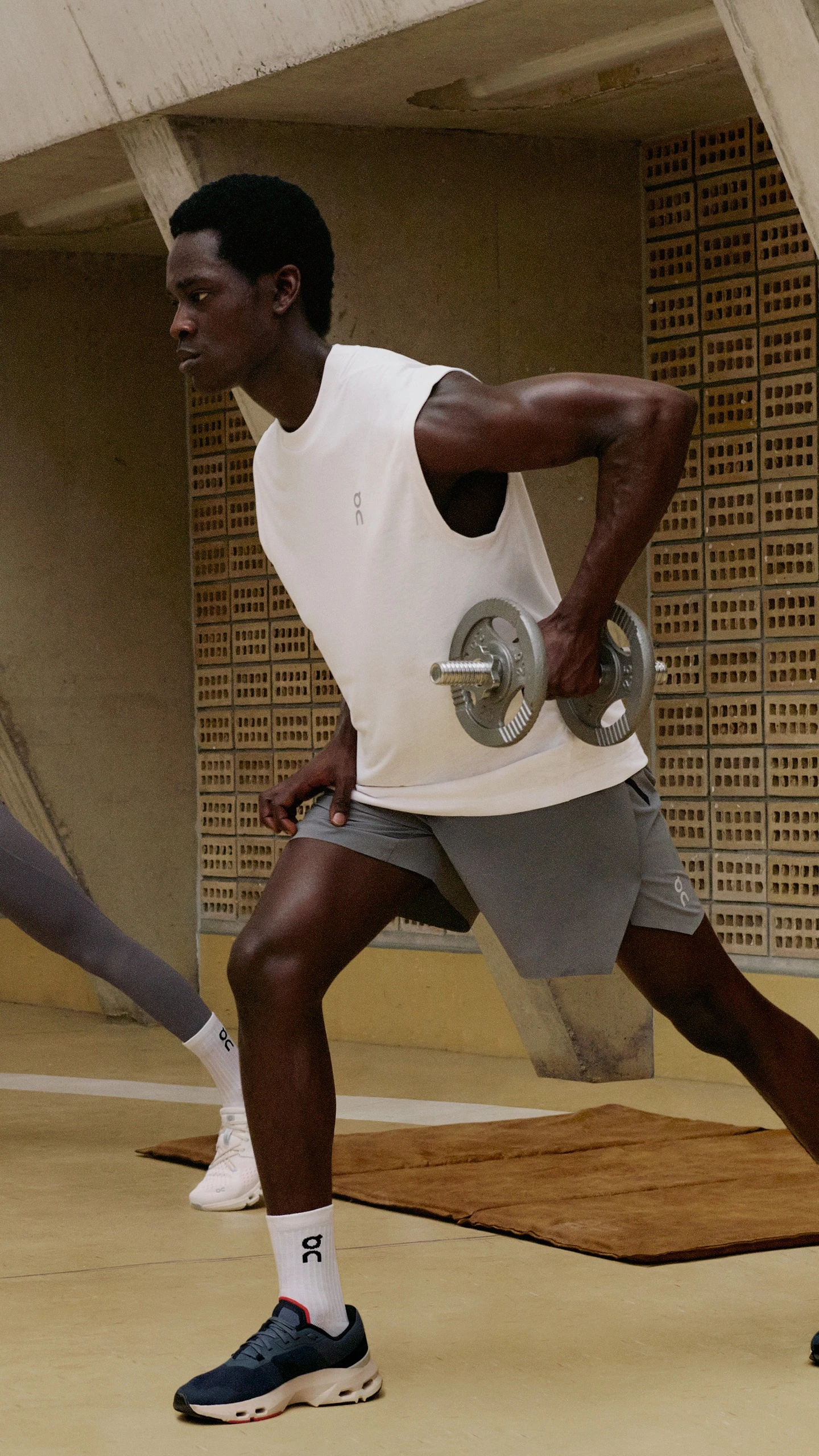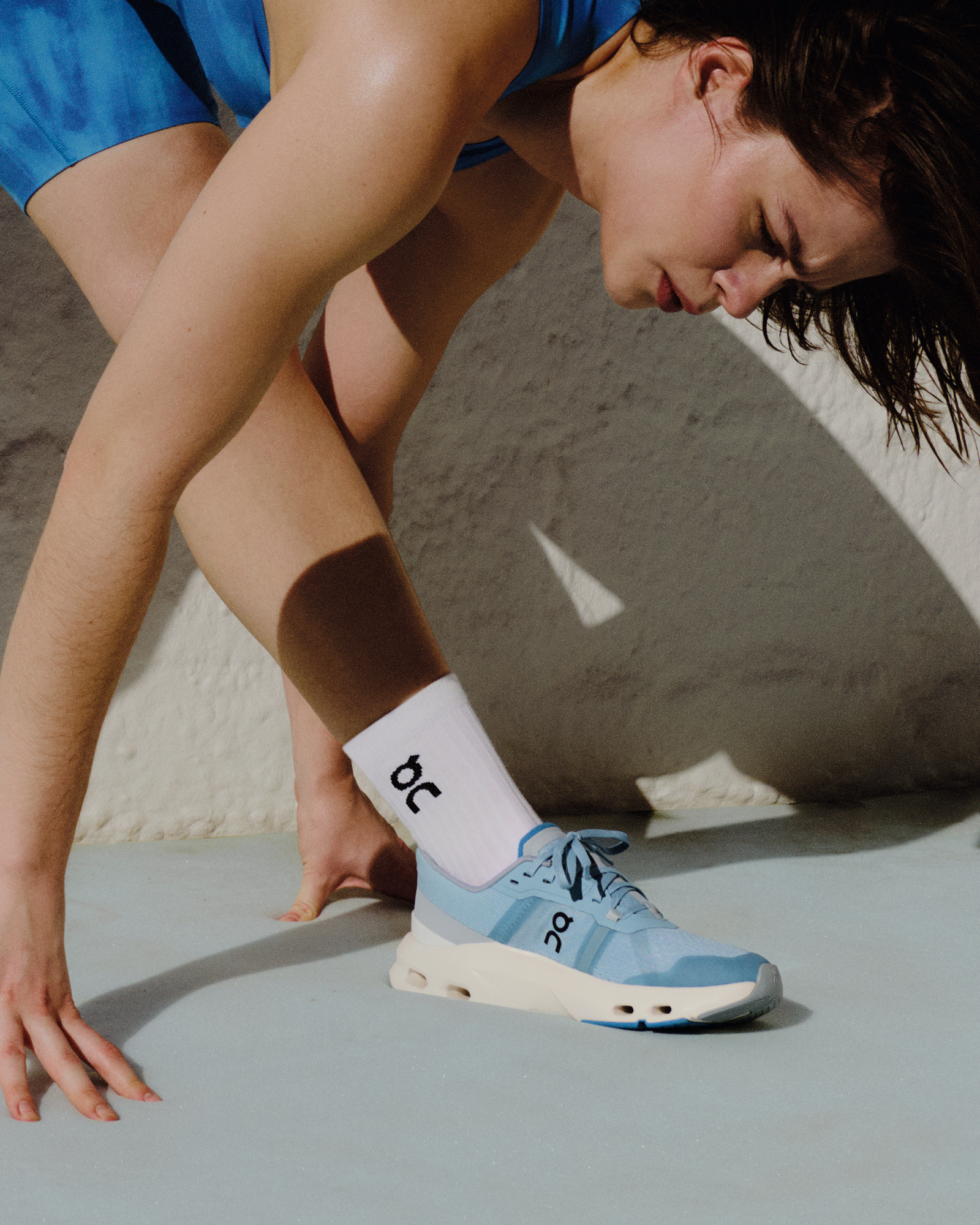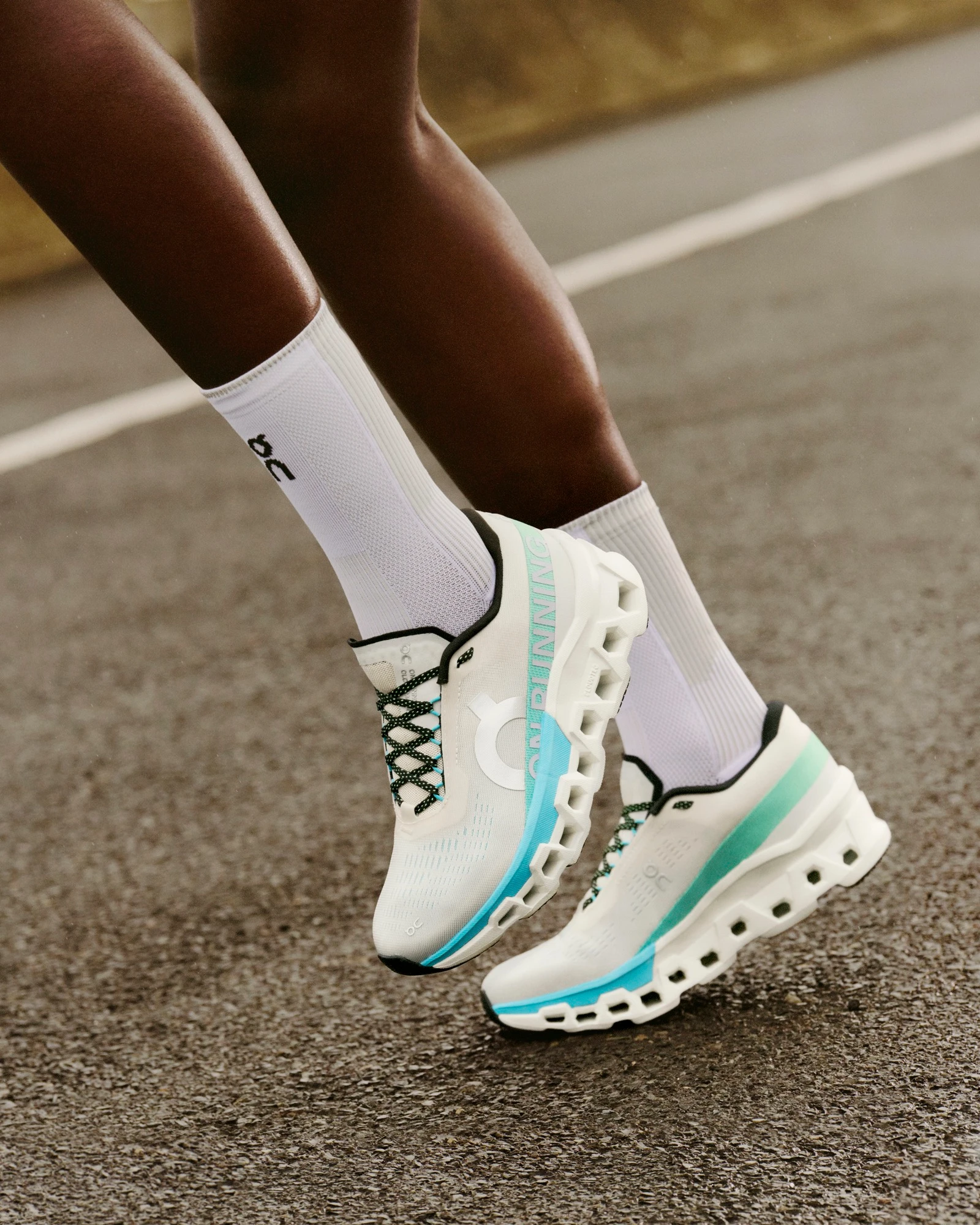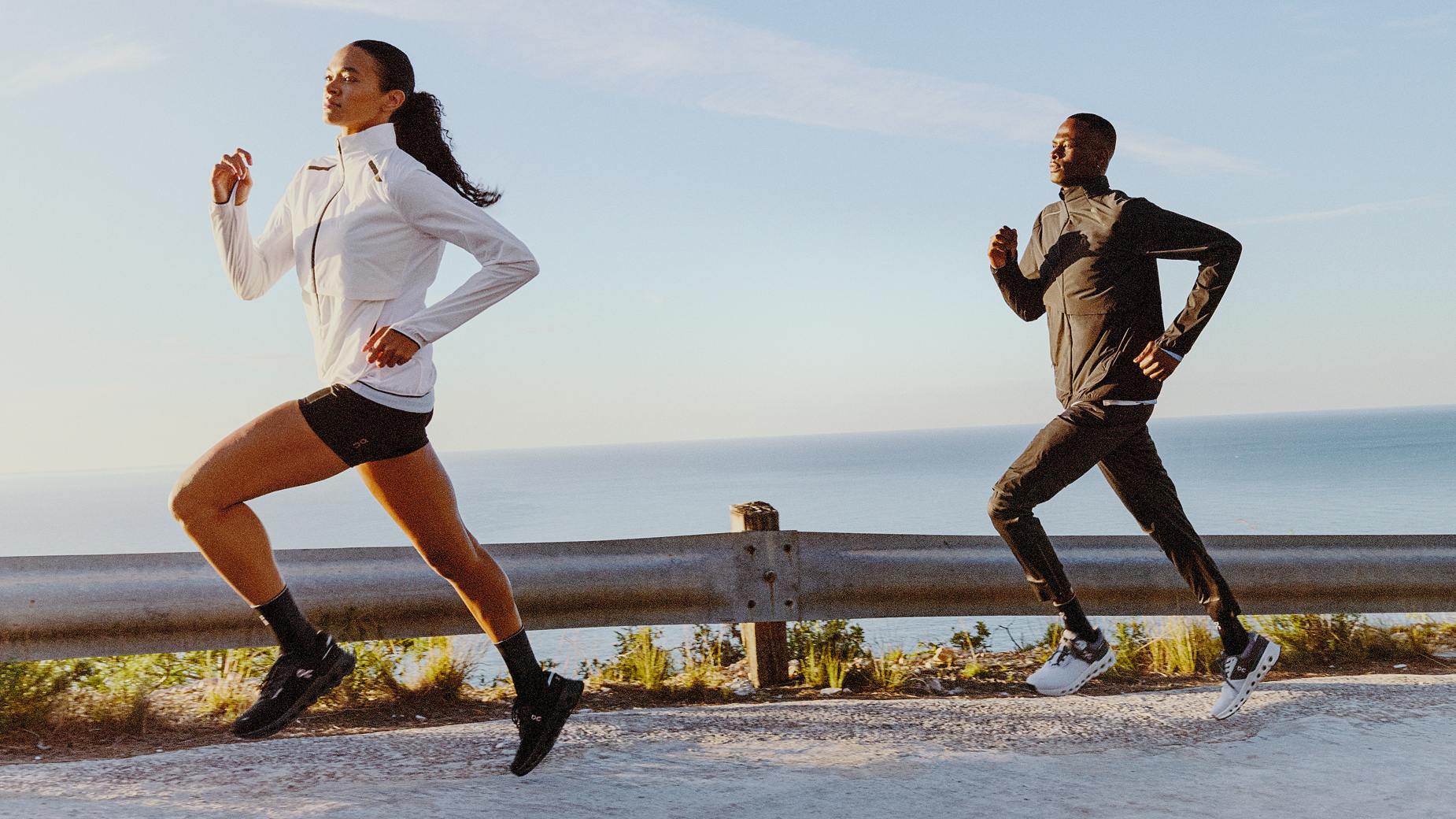

Every movement has a purpose, and so should your shoes. Whether you’re lifting, sprinting or logging miles, the right pair supports better form, faster recovery and smarter training.


Trey Étseyatsé trained hard for the LA marathon – but by mile 23, he knew it wasn’t just grit carrying him forward. It was his shoes.
“I remember feeling like I had something left in the tank,” said the Toronto-based fitness coach. “A big part of that was the support of the Cloudboom Strike. That shoe gave me exactly what I needed: soft landings, smooth transitions, and just the right amount of bounce.”
From marathon running to gym training, the right footwear makes a difference. And it’s not just a concern for Étseyatsé or elite athletes – anyone with a consistent movement practice can benefit from knowing how training shoes differ from running shoes.
Still, many people blur the lines until discomfort sets in, or worse, injury. A rolled ankle mid-burpee. Knee pain after a long run. This guide breaks it down so you can train smarter, support your recovery, and help you to avoid injury.
Different workouts demand different moves, and your shoes should keep up.
Running shoes are made for forward motion. They’re lightweight, cushioned and built to absorb impact – ideal for repetitive strides and longer distances.
Training shoes are flatter, more stable and designed for multi-directional movement – from lateral drills to HIIT and heavy lifts.
Wearing the wrong shoes can do more than feel off. It can hold you back or raise your risk of injury. Choose the right pair that matches your movement, so you can keep moving closer to your goals.
Blisters. Sore aches. That annoying twinge in your knee. Your shoes might be the reason why.
Running shoes last anywhere from 300 to 500 miles. They might still look okay, but cushioning and support degrade over time. Track both mileage and feel.
Training shoes can last longer, but once the structure breaks down or the grip fades, it’s time for a replacement, especially if performance or stability starts to slip.
Here’s what can happen when your shoes don’t match with your movement:
- Poor alignment and support disrupts mechanics, causing instability, fatigue and poor posture. - Increased injury risk from lack of proper support, putting stress on joints and muscles. - Slower recovery from less cushioning, meaning your body absorbs more impact – especially after intense sessions. - Discomfort while training like rubbing, pinching or poor responsiveness, making every rep harder. - Performance limits from inadequate shoes, holding you back from moving at your best. - Premature wear from using shoes outside their intended purpose, shortening their lifespan and reducing effectiveness.




Versatility is the name of the game, and training shoes are built to play it. Unlike running shoes, which focus on forward motion, they support movement in all directions – lateral drills, jumps, lifting and quick pivots.
“It comes down to control versus momentum,” says Étseyatsé. “Training shoes keep me steady, especially when I’m squatting or deadlifting.”
Their flatter, wider soles help you stay grounded whether you’re holding a plank or powering through plyometric drills. Flexible and grippy, they protect pressure points from ankle to heel – so you can build strength and agility without restriction.
If your workouts vary, look for a shoe that adapts. The Cloudpulse does just that, giving you the stability and freedom to move with ease.
Made for hybrid workouts, training shoes thrive in the unexpected, or whatever your plan throws at you. With a blend of stability, traction and all-around support, they help you stay focused on form mid-jump or mid-lift – not your footing.
“My training shoes make me feel confident and strong, especially when I’m lifting heavy, or focusing on exercises like squats, deadlifts, or kettlebell swings,” says fitness coach Étseyatsé. “The flat sole gives me a stable base for better balance and form, and they offer more support for side-to-side movements than running shoes.”
Étseyatsé, who blends HIIT with short runs, adds: “When I’m switching it up, sled pushes, wall balls, then a jog – my training shoes give me the versatility I need.”
Can you run in training shoes? For short jogs, yes. But for longer runs, stick with running shoes that are built for forward-motion and extra cushioning.
Use training shoes for: - Strength training and weight-lifting - High-intensity interval training (HIIT) - Plyometrics and agility drills - CrossFit and circuit training - Aerobics classes - Dance-based workouts like Zumba


No matter if you’re just starting out or pushing your limits, the right training shoes can boost your performance and reduce your risk of injury. Fit matters just as much as function. Tennis champion Iga Świątek puts it simply: “As a pro, I can tell you many players get injured when the shoe doesn’t fit right.”
Here’s what to look for to stay strong and injury-free:
- Reinforced sides for lateral stability and quick, multidirectional moves. - Thick, wide soles create a grounded base for lifting and jumping. - Arch support improves comfort and reduces strain. - Low to moderate heel drop keeps you stable and connected to the floor. - Flexible midsoles enable natural, responsive movement. - Reliable grip helps with traction during fast transitions. - True-to-you fit so it’s snug but not tight, with room for comfort and control. - Breathable design with ventilated materials and a roomy toe box to keep feet cool, especially when training in warm weather.
Mile after mile, your shoes take the hit, so your body doesn’t have to. Good running shoes protect your joints, help you run lighter, longer and stronger.
“Running shoes are made for movement,” says Étseyatsé. “When I’m logging miles or deep into marathon training, I reach for the Cloudmonster Hyper. They give me that smooth forward roll, extra cushioning underfoot, and a lightweight feel that helps me lock into a rhythm.”
Lightweight uppers, responsive midsoles and tuned heel drops work together to keep you going with less effort, so you can run faster and longer – and recover better. For plush protection day after day, try shoes like the Cloudeclipse. No two runners move the same though. Your ideal shoe depends on your stride, terrain, distance and support needs.
Need help deciding? Try our Shoe Finder.
The right running shoes depend on your mileage, experience and how your body moves. As you progress, rotating in a second pair – like a support shoe – can help prevent injuries and keep you running stronger, longer.
Here’s what to keep in mind: - Cushioned sole: Midfoot and heel cushioning absorb impact and protect your joints. - Lightweight design: Less weight means less effort – especially on long runs or race day. - Arch support: Essential for comfort and reducing injury risk over high-impact miles. - Heel drop: A higher drop offers more heel cushioning. A lower one encourages a lighter, more natural stride. - Stability: Built-in structure can guide your stride, helpful for overpronation or added support. - Flexible forefoot: Supports a smooth toe-off and natural foot movement. - Breathability: Ventilated uppers help keep your feet cool and dry, even on warm days. - Proper fit: Keeps your feet happy. No pinching or blisters. - Grip: Reliable traction is key – especially for trail running shoes, where uneven terrain increases risk.


Running shoes can handle easy miles, tough workouts and even marathon training. But the right pair helps you stay consistent by reducing fatigue and moving more efficiently.
Wear running shoes for:
- Road runs - Track workouts - Trail runs - Long-distance runs - Running several times a week
If you’re mixing in strength or cross-training, reach for training shoes instead.
Your workouts change. Your goals evolve. Your shoes should too. Start with our running analysis to find your best fit. Then explore our running shoes made for comfort, speed and support.
If you’re looking for training shoes, check out the latest styles that move with you in the gym, or on the mat. Because when your shoes match your goals, every move feels better.